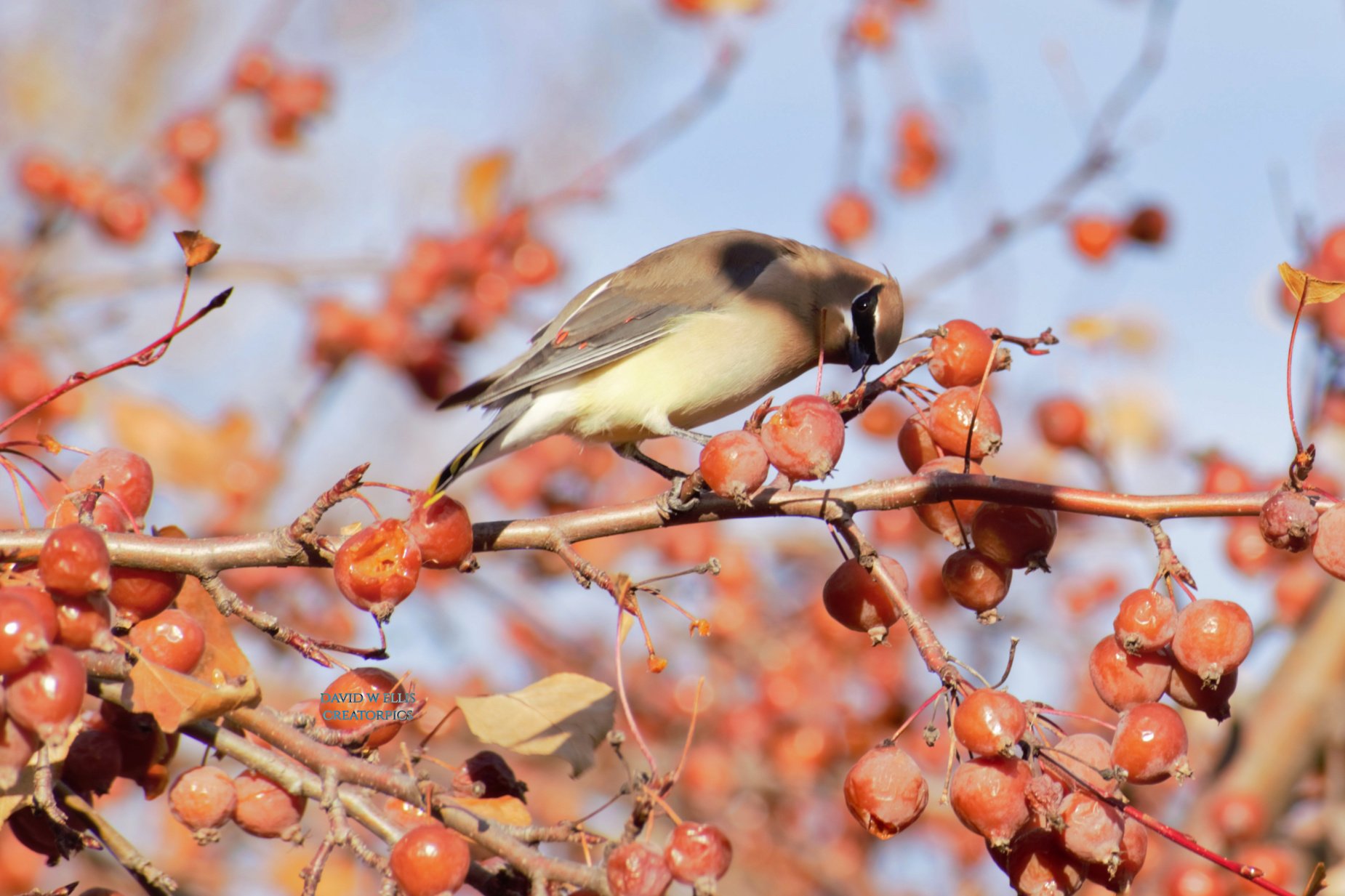Not Nuttier Than a Fruitcake
When we say someone is nuttier than a fruit cake, we mean crazy. Your mother would probably put you in time out in the corner. Mine would. But we are not talking about any human. I did say “not.” Think about the phrase from that standpoint…NOT CRAZY. There are times when we understand things more fully when we know what they are not.
Our subject is a bird.
You already know it’s not crazy; actually, far from it. The Cedar Waxwing is truly a spectacular bird. If you know a bit more about it, your world becomes brighter, more pleasant and the potential is there for you to even feel safer.
First brighter…this bird is beautiful: A black mask over its eyes, a rich creamy tan as the predominate color, and there is a yellow tipped tail with black accents. But the beauty does not end there… a tuft of feathers on the back of its head at times looks like a crown, and possibly the most amazing feature of this bird are the small red tips at the end of the gray wings of adult birds. Two more things about these red tipped feathers: they are made of wax, and biologists do not know why. This reminds us once more that is much we do know not about nature.
See the red tips on the wing? They are waxy. We do not know why.
They are pleasant. They instinctively know to flock together. It’s true, see one Cedar Waxwing…wait for the flock. Cedar waxwings flock together in groups of 20 to 50 and more. We call them social birds…gregarious is the fancy word for it. But it is not simply the because of the trite saying, “birds of a feather flock together.” And… don’t apply human meaning to their behavior. Doing so diminishes the beauty, pleasantry and most importantly the promise of safety. Stick with social a bit longer.
Why are they social birds? They live together together in a large flock. They fly together, in flock formation. Biologists call this behavior a “murmuration.” Fancy word for a completely mysterious bird behavior. Have you watched a flock of Cedar Waxwings in the air? Perhaps you’ve seen starlings or red-wing black birds fly in a flock. How do the birds fly as one individual? The entire flock turns as one bird. How do they do that? How do they know when to turn?
A flowering crab apple tree is a favorite destination for local Cedar Waxwings.
You’ve been wondering how watching Cedar Waxwings can make us feel safer since you first read about it in the second paragraph. So-question…How can observing cedar waxwings make me feel safer? Isn’t that a stretch in reasoning? No, its not…Birds flock together to be SAFE. Within cedar waxwing habitat reside two species of hawks that prey on birds. There is the coopers hawk and the smaller sharp shinned hawk. The main component in the diet of both birds is other birds. A single bird in flight or perched is much easier to catch than a flock…safer.
Now consider what a human being can understand about safety just by watching cedar waxwings or other flocking birds. Start with a question-how do these birds “know” to flock. Some call it instinct. But where does instinct come from? Instinct is a quality of animal behavior science does not understand fully. Seriously, where does instinct originate?
God gives instinct. It is a safety feature for cedar waxwings. Nothing fruity about it. Oh, why the comparison to fruit? A cedar waxwing’s diet is 84% fruit, 4% flowers and 12% insects. That’s why this bird has another well-deserved name: Frugivorous.
Instinct comes from God.
He gives it to keep His birds safe.
What does that have to do with me you ask?
To keep us safe, God gave His Son Jesus to die on the cross.
This is an eternally safe gift…for the entire human “flock.”
This tree had more than a dozen Cedar Waxwings in it when the photo was taken.

